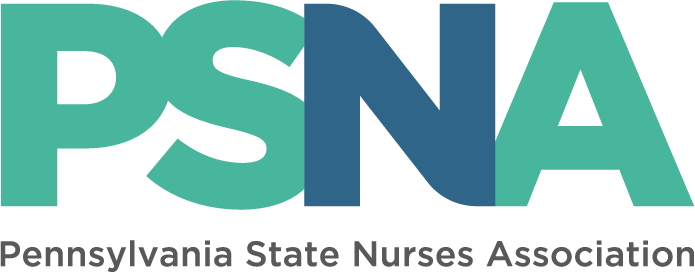Mom is Fine: Pennsylvania’s Hospitals Are Not
By: Betsy M. Snook, MEd, BSN, RN
CEO, Pennsylvania State Nurses Association (PSNA)
It was a lazy day as I watched my grandchildren splash in their pool. Then the call. My sister told me our 89-year-old mother had become unconscious in the passenger seat on the way home from shopping. They were now in an ambulance to a local emergency room. It is a call no one wants to receive.
As I rushed to the hospital, the medical staff stabilized my mom and admitted her into the acute care unit. When I arrived, I saw a feeble and frail woman in place of my once energetic and vibrant mother. I immediately felt protective, not only as a daughter but a health care provider who had served at the bedside for many years. I straightened her up, combed her hair, talked to her about how she was feeling, and asked about her care.
During our discussion, I noticed a unit that was buzzing with alarms and staff rushing from room to room as they tried to operate efficiently and manage changing stressors within the unit and hospital environment. I shared my observations with my mom’s nurse who has been working at the bedside for over 30 years. In her words, nurses “used to measure acuity and now we don’t … our patients are sicker and require more care … and we are tired.” She shared that she worked until 10 pm the night before and was up at 5 am to come to work that day. I began to feel anxious and concerned that something in my mother’s care would be overlooked. Fortunately, my mother was discharged without becoming a statistic. Yet in a system that lacks sufficient staffing and protections for employees, it could have been very different.
Every day in the U.S., skilled health care professionals provide quality patient care to millions of hospital admissions. We also know that an insufficient number of essential health care personnel, such as registered nurses, are tired and stressed, which contributes to preventable medical errors and poor patient outcomes. In 2017, Pennsylvania’s health care providers reported 301,514 total patient safety event reports with 7,881 serious events, a 6.3% increase from the 2016 patient safety report (www.patientsafety.pa.gov). Additionally, there were 1,044 medication errors reported with 81.8% of patients receiving the wrong dose of medication for one or more months.
These numbers, if reported in any other profession, would be inexcusable. Yet they have garnered little attention in the public eye. It is time patients, families, and providers join forces to acknowledge patient safety issues and require initiatives to ensure safety. Creating safe work environments that promote health care provider and executive communication, interdisciplinary teamwork, and sufficient nurse staffing is the first step in reducing medical errors and improving patient outcomes. It is our shared responsibility to ensure that our loved ones, like my mother, don’t slip through the cracks of a broken system. I invite you to take action today at www.psna.org/codeblue to learn how State Rep. Judy Ward and PSNA are working to solve this problem.


